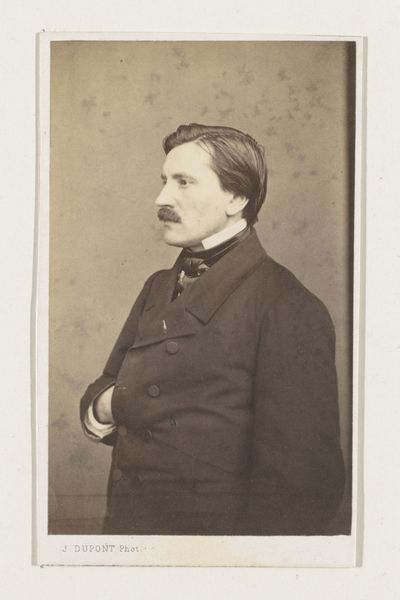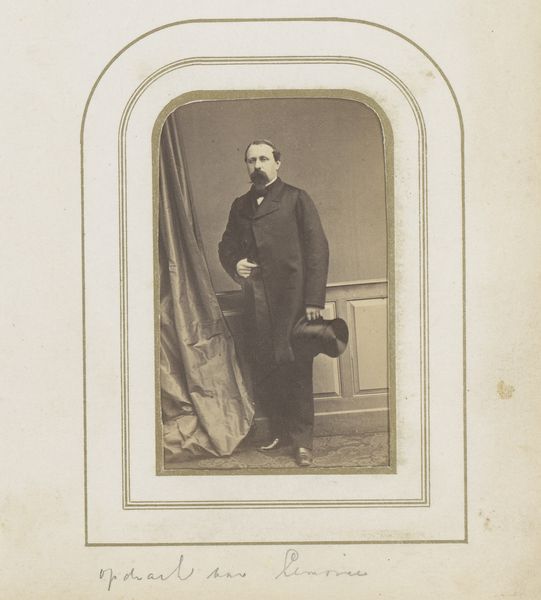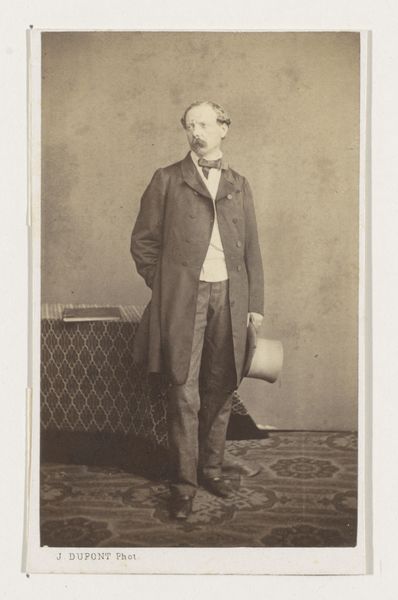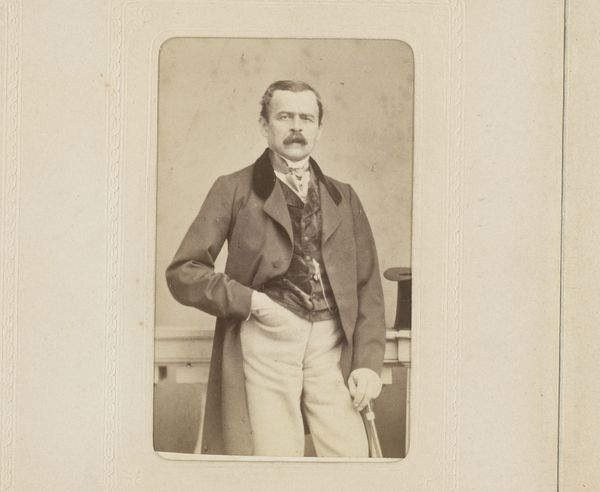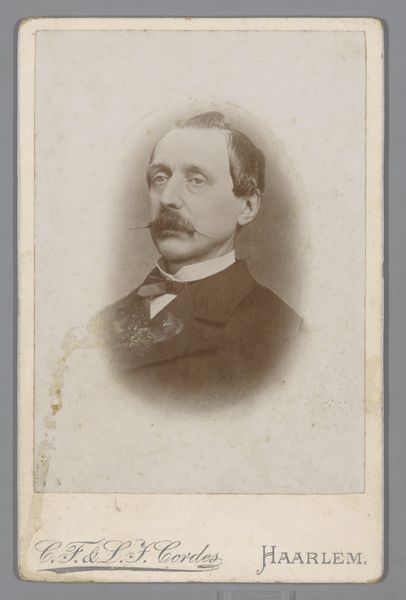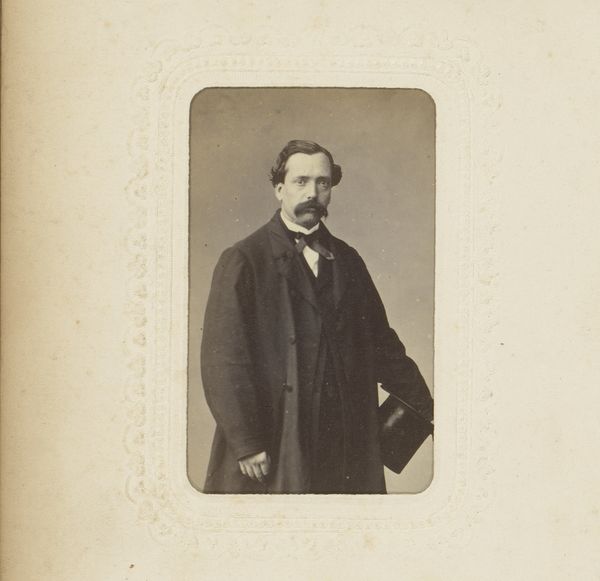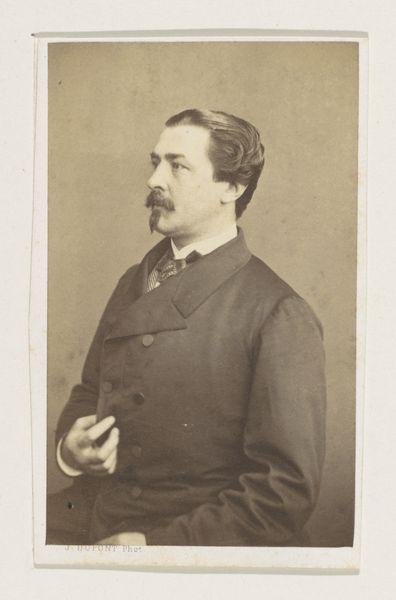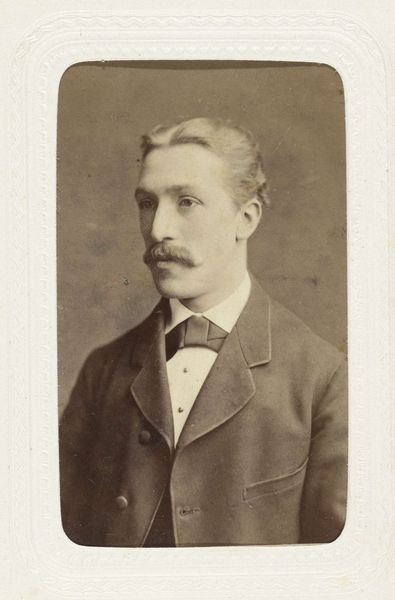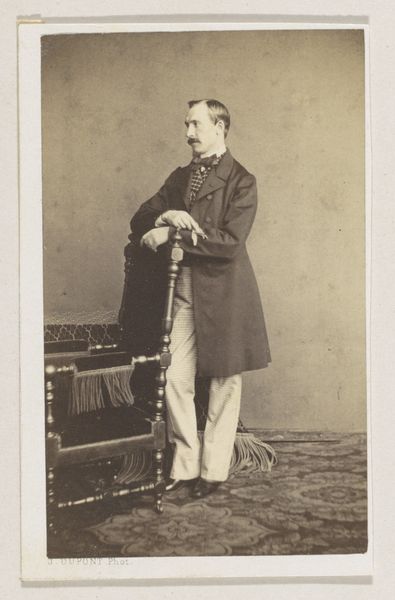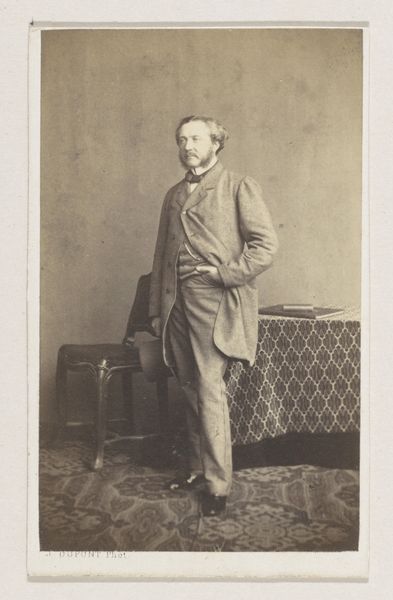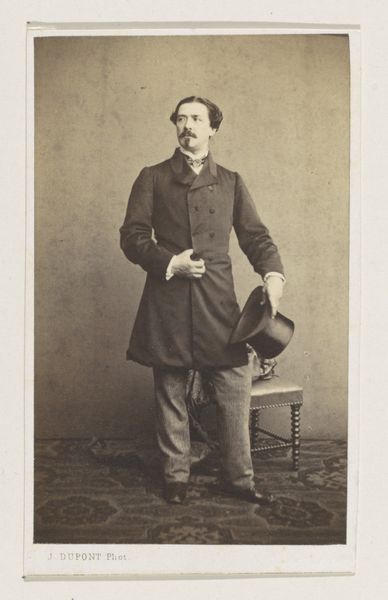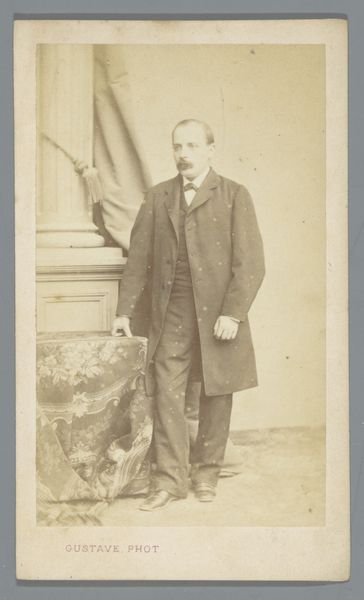
Dimensions: height 101 mm, width 62 mm
Copyright: Rijks Museum: Open Domain
Curator: The quietness of this albumen print is striking. There's such a contained mood about it. Editor: Indeed. We are looking at a photograph from 1861 by Joseph Dupont, entitled "Portret van de schilder Ferdinand Wilhelm Pauwels, halffiguur," which translates to "Portrait of the painter Ferdinand Wilhelm Pauwels, half-figure." It is quite demonstrative of the romanticism prevalent at the time. Curator: Yes, you sense it in the profile pose, and the carefully constructed light. But it is the subtle tonal gradations in this image that truly arrest the eye. Dupont has clearly mastered the manipulation of light to achieve such delicacy, especially considering the limitations of early photographic technology. Editor: Absolutely. Photography’s arrival significantly shifted how portraiture functioned within society. Prior to this, commissioned paintings served as records of status and legacy. But now, photography made portraits more accessible to a wider segment of society and fostered a burgeoning culture of celebrity. Artists, like Pauwels here, were subjects and active agents in constructing and disseminating their image. Curator: A telling sign of the shift in societal perception of artists; they became spectacles, figures of cultural significance. I observe, for instance, how Pauwels’ attire—the patterned vest, the precisely tied bow—functions almost as an advertisement of his aesthetic sensibility. This picture becomes not only about capturing likeness but also about cultivating an image. Editor: Exactly. The choice of portraying him in profile, too, is particularly insightful, given portraiture’s legacy rooted in classical art and profile portraiture as a kind of stoic proclamation. In assuming the mantle of artistic heritage, Pauwels projects authority as well. Dupont captures and crafts an image intended for broad circulation. Curator: And yet, there is an appealing humanity retained. Despite the staging and construction, there is something quite candid about this depiction, or perhaps my eye finds that in the way the image flattens aspects of depth... Editor: Perhaps Dupont succeeded, then, in mediating between the desire to cultivate celebrity while adhering to an accepted notion of reserved artistry? Curator: Undoubtedly a balance that speaks to the moment in the social history of art. Editor: Indeed, it is intriguing how art-making can capture, and create a pivotal dialogue about art and artists.
Comments
No comments
Be the first to comment and join the conversation on the ultimate creative platform.

